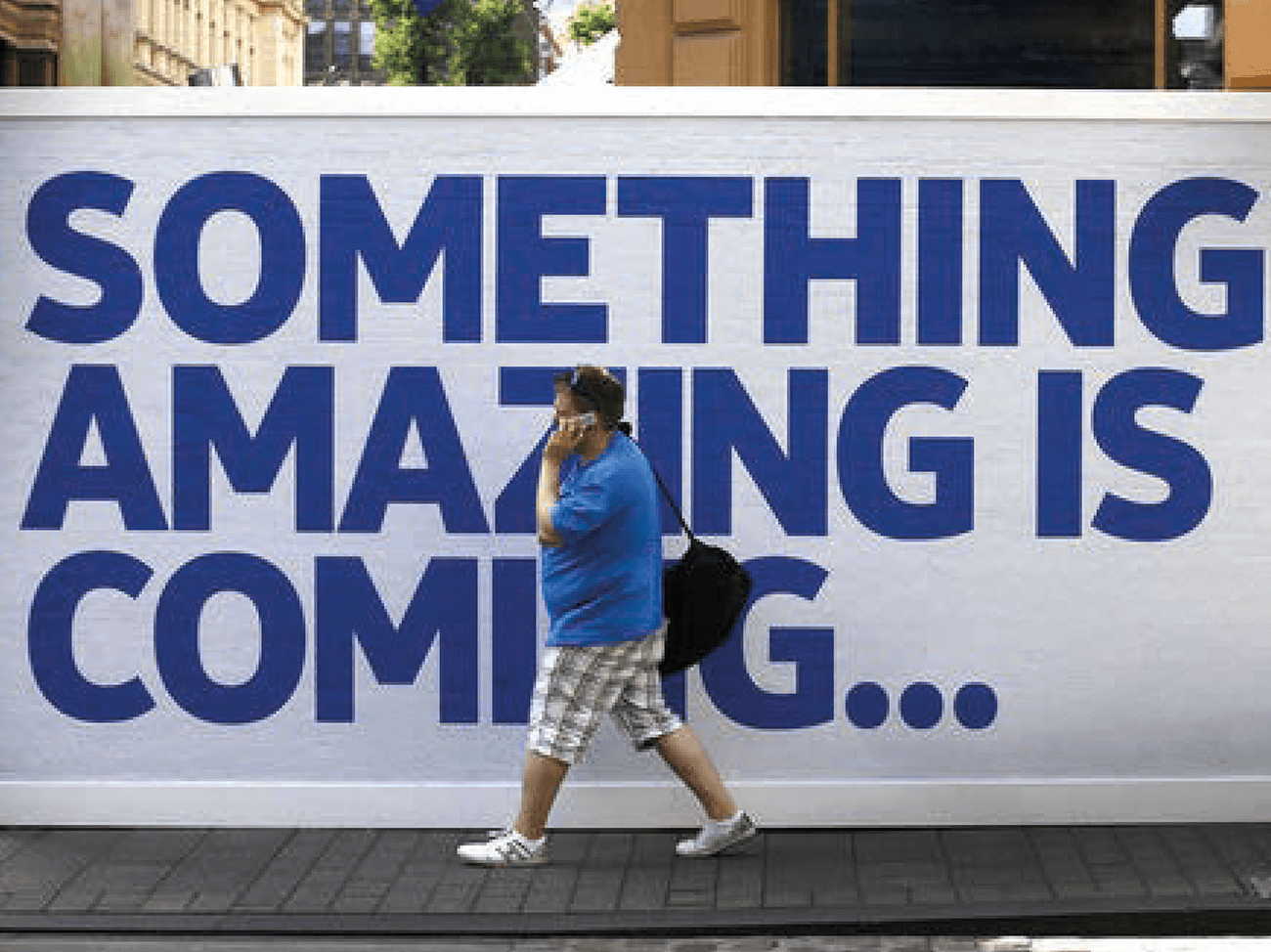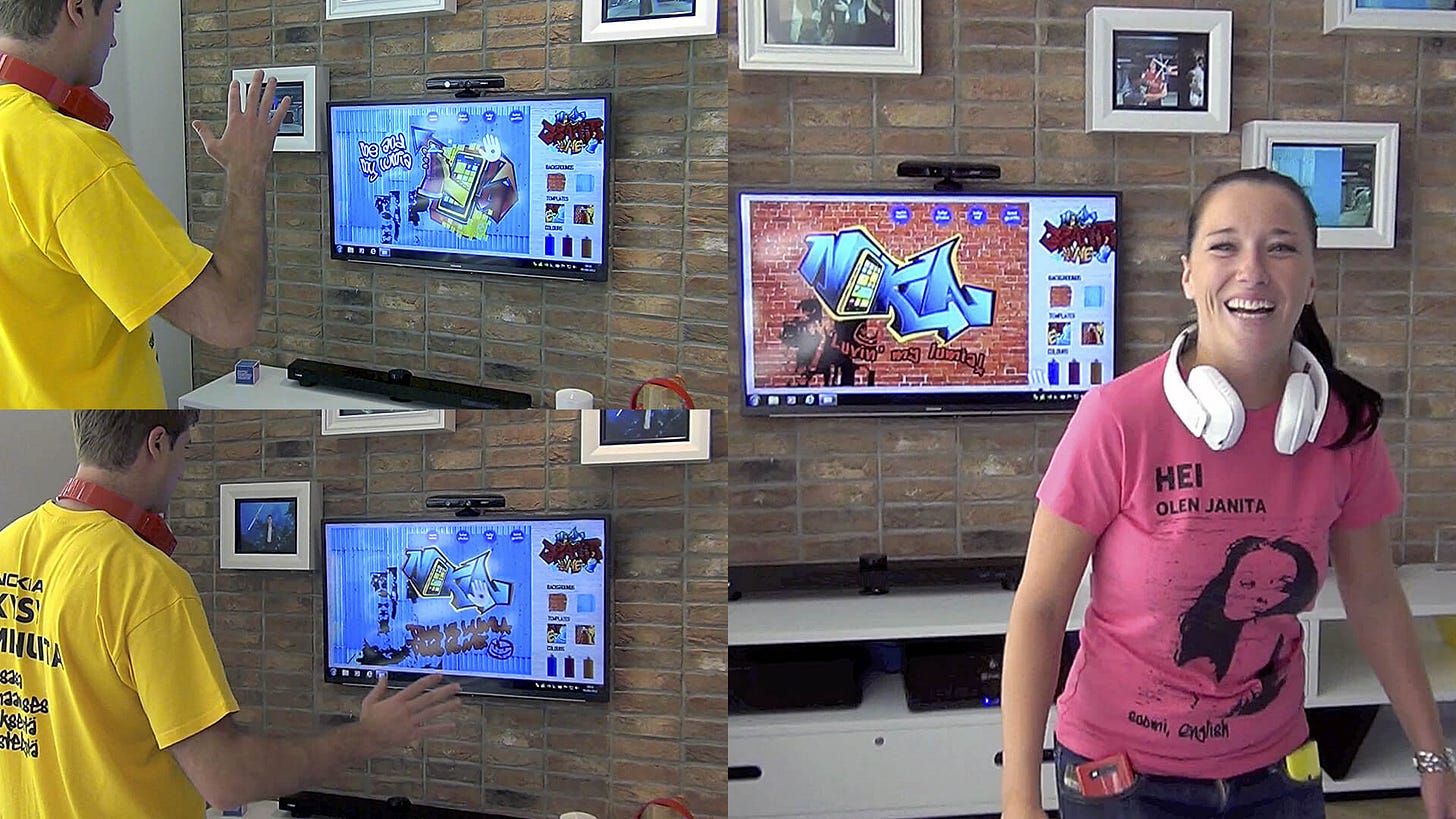From Copy to Context: The Messaging Revolution
We've been trained to think messaging is about finding the right words to convey the right ideas to the right people. But what if messaging isn't just words and images?

I was hired at Nokia many moons ago (more than what I care to admit) to help own and partner sales teams explain complex technology concepts at point of sale. Nokia was not gaining much traction, not because the message was bad, it was eloquent, benefit-focused, perfectly crafted according to every messaging best practice. It also passed rigorous research. The sales teams were failing because customers simply weren't absorbing any of it.
After weeks of driving engaging sales enablement sessions and watching beautifully written scripts fall flat, I had a moment of inspiration: customers weren't rejecting our messages because they disagreed with them. They weren't even processing them at all. Our carefully crafted words were being mentally filtered out as marketing noise before they could even be evaluated.
That's when I threw out every messaging framework and did something new: I stopped trying to verbally communicate everything.
Instead, I created behavioral traps, experiences designed to capture attention through curiosity rather than persuasion. And I treated the store remodel as a product launch.
I transformed store construction barriers into an interactive urban art experience, like graffiti artists would do. A massive QR code embedded in graffiti-style artwork invited passersby to a microsite where they could "Banksy-fy" their photos, preview store offerings, and register for the grand reopening.
Store staff created personalized graffiti t-shirts through a dedicated platform, while the reopened store featured an Xbox Kinect zone where customers used gesture controls to create digital graffiti masterpieces—turning the entire customer journey into an artistic conversation.
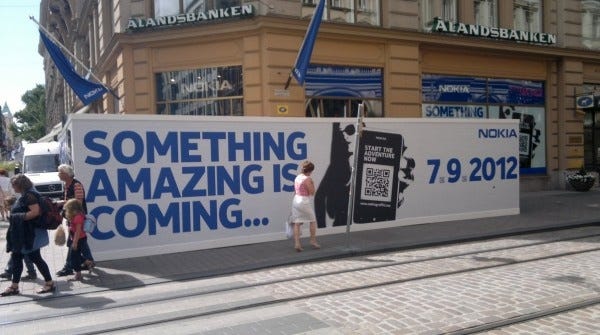
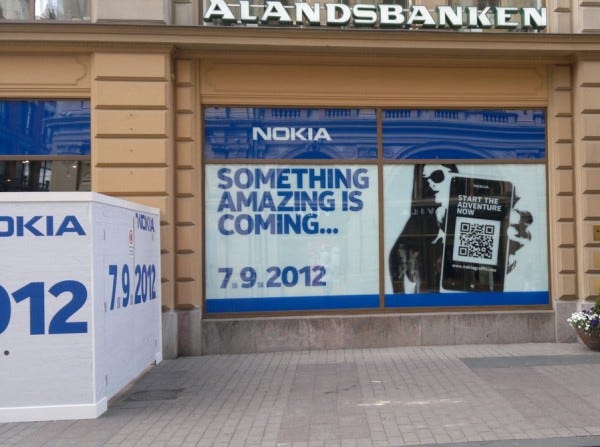
I built a "micro universe" experience where customers could explore intricate details through the Nokia PureView camera lens. I launched an unexpected silent disco in the store, where people discovered Nokia Music by watching others dance to unheard rhythms. For navigation, I set up a n experience where people could experience driving a Jopo bike around iconic world cities, while different playful virtual voices guided them through turns without ever mentioning GPS accuracy, voice guidance, and real-time traffic updates.

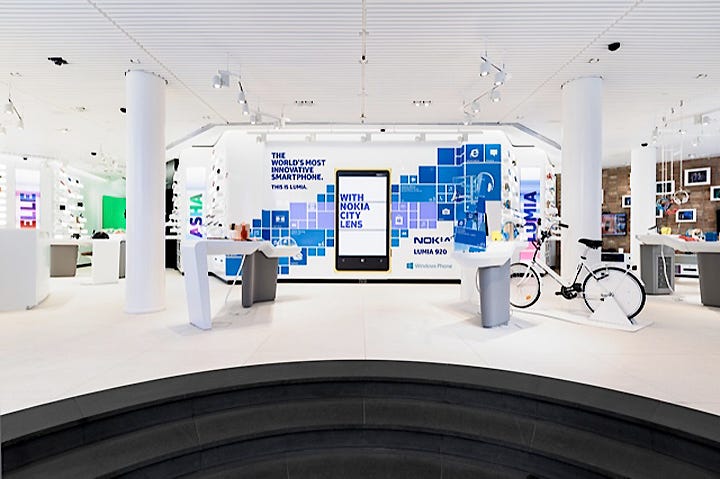
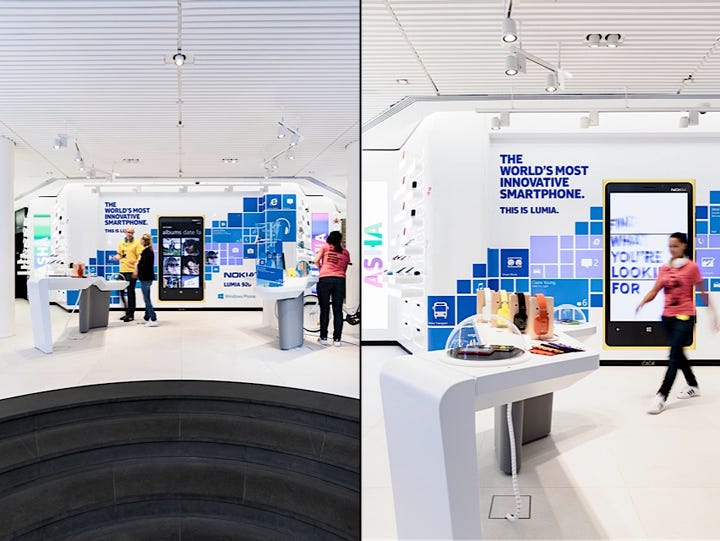
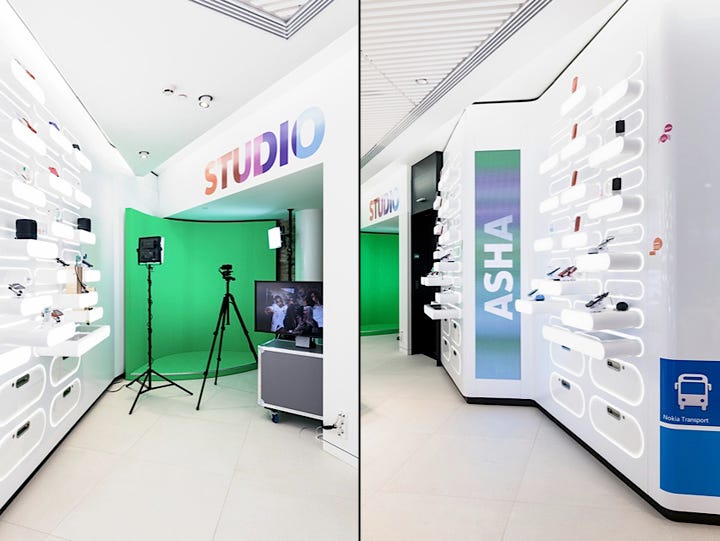
I had stripped away everything that looked like marketing and replaced it with something that looked more like... play? art? theater?
If you were doing marketing in the early 2000s, you probably recognize this as experiential marketing.
Then everything became digital and we continued to be trained to believe that product marketing's job is to inform, convince, and persuade through messaging. But what if that thinking is actually shortsighted?
What if customers don't want to be informed? What if their brains have evolved sophisticated filtering mechanisms specifically designed to ignore attempts at persuasion? What if the harder we try to convince, the more resistance we create?
The Storyteller's Ancient Wisdom
I recently stumbled onto something that changed how I think about human influence: the principles that UX designers use to guide behavior without triggering resistance.
Every storyteller knows the difference between telling and showing, but most have forgotten why this distinction matters. It's not just about style, it's about bypassing psychological defense mechanisms.
When Hemingway wrote "For sale: baby shoes, never worn," he wasn't asking us to feel sad. He was creating conditions where sadness would emerge naturally from our own minds. The story we construct feels like our discovery, not his manipulation.
But traditional product marketing has been drifting away from this wisdom entirely. We've become obsessed with clarity, benefits, and explicit value propositions. We tell prospects exactly what to think, when to think it, and why our conclusion is correct.
We've forgotten that humans have spent millions of years evolving defenses against being told what to do by strangers.
The Behavioral Architecture Around You
The smartphone in your pocket doesn't explicitly command you to check it. Instead, you become increasingly aware of its presence through subtle vibrations and notification sounds, making you more likely to pick it up even without a specific reason.
Instagram doesn't directly tell you to keep scrolling. Rather, it offers an endless stream of new content with no visible end point. When you discover something interesting or receive likes on your posts, your brain releases feel-good chemicals that make you want to continue the experience, creating a cycle that keeps you coming back.
Netflix doesn't need to convince you to watch another episode. It simply starts the next one automatically when the current episode ends, removing the moment where you would normally decide whether to continue watching or do something else.
These aren't marketing messages. They're behavioral architectures that make certain actions feel natural, inevitable, even chosen.
Great UX designers ace the art of influence without persuasion, using three principles that most marketers have never heard of (me included, until recently).
Affordances make actions feel possible without suggesting them
Signifiers guide attention without commanding it
Feedback confirms progress without claiming credit
They're psychological ways of influencing behavior that feel like personal choice rather than external pressure.
Affordances: The architecture of desire
An affordance isn't what something can do, it's what someone perceives they can do with it. A door handle doesn't just afford pulling; it makes pulling feel obvious, natural, inevitable. The genius is that you never feel manipulated by a door handle. You feel like opening the door was entirely your idea.
At Nokia, my micro universe experience worked the same way. Customers didn't think "Nokia is showing me their camera is good." They thought "I wonder what else I could explore with this thing." The desire emerged from their own minds, making it impossible to resist.
Traditional messaging tries to create desire through persuasion. Affordance-based messaging creates conditions where desire emerges naturally.
Signifiers: The art of invisible direction
A signifier points toward action without demanding it. It's the gentle glow that draws your eye to a button, the pathway that curves naturally toward the entrance, the placement that makes one choice feel obvious while keeping alternatives technically available.
My Nokia silent disco worked through pure signification. No signs, no explanations, no calls to action. Just colorful headsets hanging from the ceiling, people smiling while wearing them, the suggestion of rhythm in their movements. Curiosity drew customers in because the experience was signified, not marketed. My internal marketing materials called it “the silent disco” but there wasn’t any sign announcing a silent disco at all.
The genius of signifier-based messaging transforms prospects from targets of persuasion into agents of their own discovery.
Feedback: The confirmation lock
Feedback doesn't just confirm that something happened, it makes you complicit in wanting it to happen again.
When Grammarly shows you a writing improvement, you don't experience it as advertising. You experience it as your writing getting better.
When Nokia customers heard custom voices giving navigation directions, they weren't thinking about technology features, they were thinking about adding their children's voices bringing family on every journey.
The best feedback loops make customers feel like they discovered the value, not like you gave it to them.
Why This Still Isn't Enough
At this point, you might think you understand the framework:
Replace telling with showing.
Create affordances instead of claims.
Use signifiers instead of calls-to-action.
Design feedback loops instead of benefit statements.
But that's still thinking like a product marketer trying to improve messaging.
The real breakthrough happens when you realize that messaging isn't a communications problem at all, it's a behavioral design problem. You're not trying to change minds; you're trying to change contexts. You're not crafting better messages; you're architecting experiences that make your desired outcomes feel inevitable.

We're living through the collapse of the attention economy that made traditional messaging possible.
In 1990, the average consumer saw 3,000 marketing messages per day. Today, it's over 10,000. But human attention capacity hasn't increased, it's actually decreased as our brains adapt to information overload by becoming more selective about what deserves processing.
The result: traditional messaging isn't just less effective, it's becoming actively counterproductive. Every "clear value proposition" and "compelling call-to-action" triggers more sophisticated mental filters. Every attempt to persuade creates more resistance.
Meanwhile, a generation raised on Netflix algorithms, Instagram feeds, and TikTok recommendations has been trained to expect experiences that feel personally curated rather than broadcast. They don't want to be told what to want, they want environments where their desires can emerge and be confirmed through interaction.
The End of Persuasion: When Customers Convince Themselves
My most radical discovery is not that experiences work better than scripts. It is that when experiences are designed well, selling becomes impossible because buying becomes inevitable.
But this creates an unexpected problem: how do you scale something that depends on genuine discovery rather than replicable persuasion techniques?
The answer lies in understanding that you're not scaling experiences, you're scaling the conditions that make discovery inevitable.
Rewiring Influence
My Nokia experiences drew from disciplines that had nothing to do with marketing: astronomy (the micro universe), music festival culture (the silent disco), gaming and entertainment (the turn by turn guide).
But the real breakthrough came from studying how each discipline creates conditions for behavior change:
Astronomy doesn't convince people the universe is vast, it provides telescopes that make vastness undeniable. Music festivals don't persuade people to dance, they create acoustic and social environments where dancing feels natural. Games don't argue that challenges are fun, they design progression systems that make difficulty feel rewarding.
Each discipline has spent centuries perfecting influence without persuasion. Marketing is the only field still trying to change behavior through argument.
The most dangerous assumption in marketing is that customers need to be convinced. What if they need to be invited? What if they need to be enabled? What if they need to be surprised by their own desires?
Practical Application: Architecting Discovery
Instead of auditing your messaging, audit your customer's journey first through three lenses:
Affordance architecture: Where in your customer experience do people discover new possibilities for themselves? Not where you tell them about possibilities, where they stumble onto them naturally. If your customer journey is a series of explanations rather than revelations, you're still thinking like a traditional product marketer.
Signifier signage: How does your environment guide attention without demanding it? The most powerful signifiers don't look like marketing at all, they look like natural curiosity traps. Your website, your sales process, your product demos should create irresistible paths toward discovery.
Feedback experience: When do customers get to validate your value proposition through their own experience rather than taking your word for it? The goal isn't to provide feedback about your product, it's to give customers feedback about their own transformation.
Study how movie directors control pacing and attention, then apply those rhythms to your customer onboarding. Note how architects guide movement through space, then redesign journeys of discovery. Learn how game designers create addiction loops, then embed similar progression systems into your product onboarding.
You'll stop asking "What should I tell my customers?" and start asking "What conditions can I create where my customers will discover the truth for themselves?"
✨ Welcome to the age of behavioral architecture, where the message is the experience, where psychology is the strategy, and where the best marketing is indistinguishable from magic.✨
Here’s another real-world example of affordances shaping behavior: a case study at SimplyCodes.



